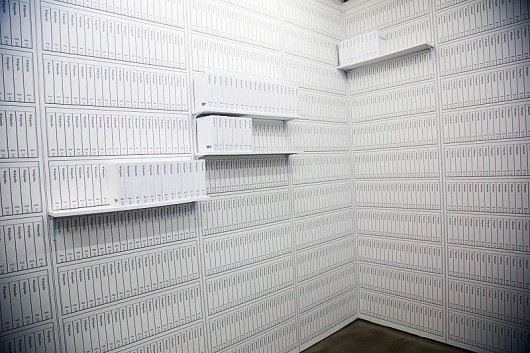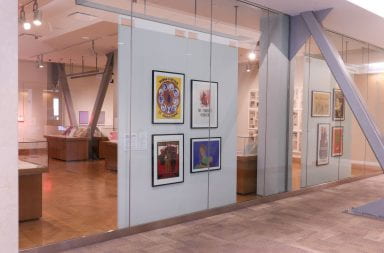
Print editions of Wikipedia by Michael Mandiberg help show how information is collected, in NYC on June 18. Credit: Courtesy of Creative Commons
Ordering subjects in an abnormal way can be as interesting as it is meaningful. Twenty-four students in Kris Paulsen’s History of Art 5001: The Task of the Curator will collectively curate the exhibition “A to 12: The Task of the Curator” to show a variety of arrangement systems adopted by different artists.
The exhibition, opening to the public at the Hopkins Hall Gallery on Saturday and running until Dec. 2, intends to tell the meaning of “curate” to the public.
“‘Curate’ originally meant a person who cares for things; often someone was unable to care for themselves,” Paulsen said. “This idea of curating now means any active selection or tastes, so it is used a lot in a common or colloquial way to mean a demonstration of taste, which is a very different thing from caring for objects.”
The exhibition explains the significance of curating in art history as well as in contemporary art.
“Curating is important in an art historical context because it has helped define artistic movements across time, which has really shaped how we see the course of history,” said Anna Talarico, a third-year in history of art, in an email. “Curating is vital to modern art.”
“A lot of people have the ‘it looks like my child could have made that’ mentality toward contemporary art,” she said. “When modern art is curated well, people are able to understand what the art is trying to say, instead of judging a work just by the way it looks. Contemporary art is not always difficult to understand; it just needs someone to enable it to speak.”
According to Paulsen, curating also introduces the world to a type of art that people might not be familiar with.
“More and more attention is being paid in art history not just because of the artworks, but to the exhibitions in which they appeared and the curators who chose those works perhaps from obscurity,” Paulsen said. “Exhibitions give them a chance to be seen and to launch one’s career.”
According to the abstracts written by students, this exhibition examines the ways in which visual artists interpret collecting and sorting in a culture overflowing with data, technology and things.
“I think curating matters because the way in which you collect or organize something will bring ideas,” said Elliott Jenkins, a fourth-year in history of art.
Paulsen said although certain ordering systems might not be reasonable, things arranged in those systems can tell something different.
“The show is all of the artists who collect things and then organize them, sometimes in an idiosyncratic way using strange systems of logic or very innovative techniques for bringing materials together,” Paulsen said.
As an example, she mentioned Lenka Clayton, an artist who alphabetically rearranged a speech of former President George W. Bush after 9/11.
“It gives us a database of the amount of (times) he said ‘Afghanistan,’ the amount of (times) he said ‘Al-Qaeda’ and the amount of (times) he said ‘America,’” Paulsen said. “It is not a sensible way to organize a speech, but it tells us something interesting.”
She also said that people often say “A to Z” or “1 to 12,” so the title “A to 12” indicates the absurdity of the order to correspond with the exhibition.
The exhibition will include Andy Warhol, Carmen Winant, Ed Ruscha, Clayton, Michael Mandiberg, Natalie Bookchin, William E. Jones, Christian Marclay, Shana Lutker and John Baldessari.
“All of the artists in the show are collectors of things and also arrangers of things,” Paulsen said.
The exhibition also shows artists’ different interpretations of collecting.
“Right now we have so much technology and data, and people kind of internalize all of that and make sense for themselves by collecting, organizing and ordering their own personal collections,” Jenkins said. “So these artists’ work in the exhibition just speak to the ideas of why we collect.”


